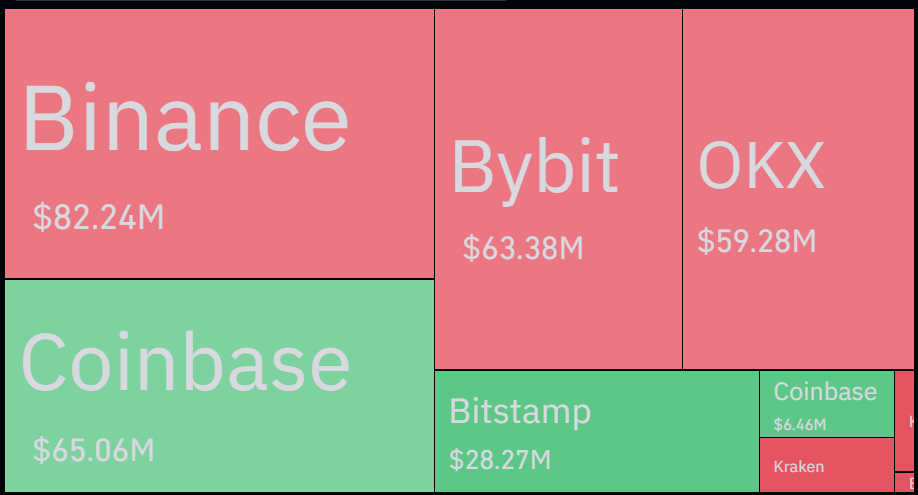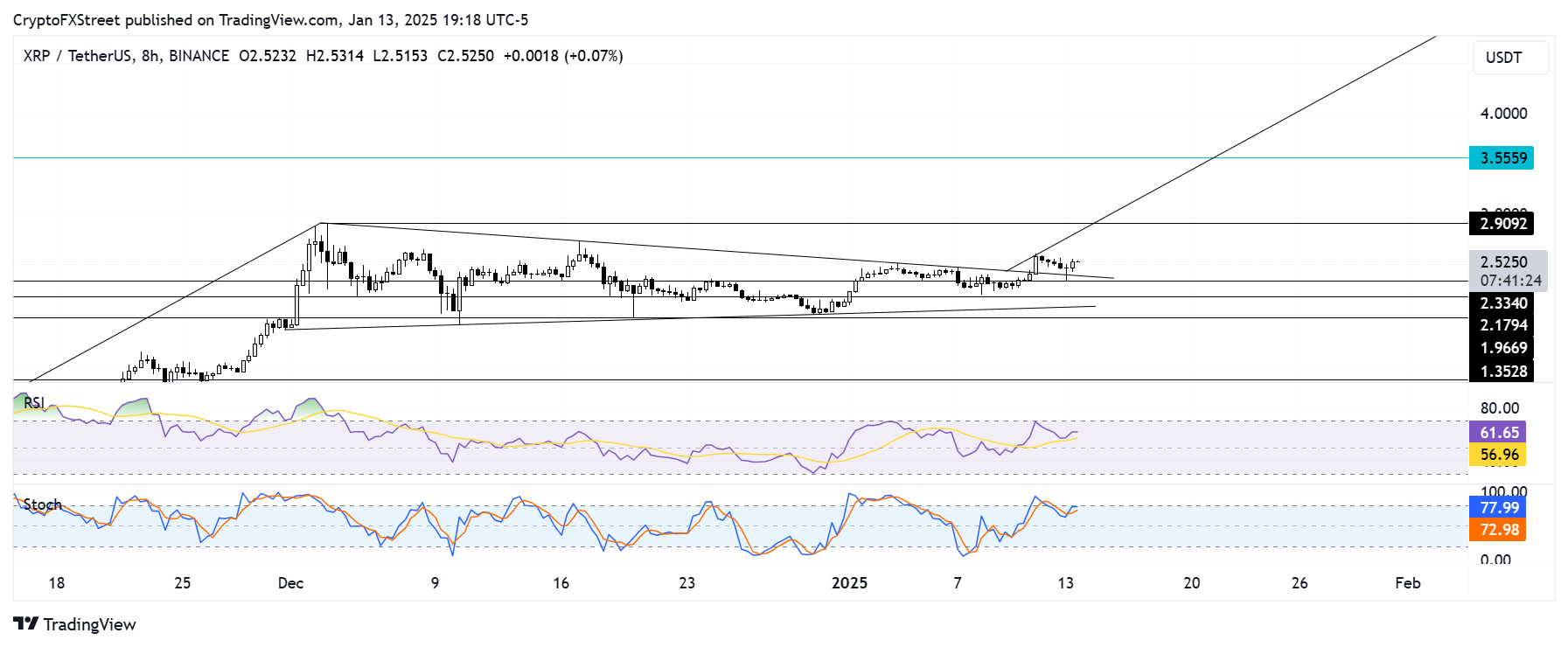XRP validates bullish pennant as lawyer weighs in on SEC's appeal against Ripple
- XRP's strong resilience against the wider crypto market decline was strengthened by increased buying activity across retail and institutional investors.
- SEC's delay in filing opening brief in appeal over Ripple vs SEC ruling is a normal occurrence in litigation processes.
- XRP could rally to a new all-time high above $4.50 but faces a key resistance hurdle at $2.90.
Ripple's XRP maintained a green outlook on Monday, rising more than 4% in the past week while other assets experienced a decline. Despite the positive price momentum, a retired securities lawyer noted that the Securities and Exchange Commission's (SEC) delay in submitting its opening brief for the appeal against Judge Analisa Torres' Ripple vs SEC ruling is common during litigation.
XRP investors continue buying activity as lawyer sheds light on SEC's appeal
XRP investment products globally recorded over $41 million in inflows last week, per CoinShares.
The inflows helped the remittance-based token to show resilience last week despite the lackluster performance of other top crypto assets. On the weekly timeframe, only XRP trades in the green among the top 20 cryptocurrencies by market capitalization.
The price performance is supported by XRP net outflows across top exchanges. Unlike crypto ETFs, outflows in exchanges signify rising bullish momentum and vice versa for a decline. In the past week, exchanges like Binance, Bybit and OKX have recorded XRP outflows of $82 million, $63 million and $59 million. However, US-based XRP investors seem more cautious in their behavior as Coinbase recorded over $65 million in inflows.

XRP Exchange Net Flows. Source: Coinglass
Meanwhile, attention has turned to the January 15 deadline for the SEC to file its opening brief for its appeal against Judge Analisa Torres's final ruling in the Ripple vs SEC case. While XRP community members have suggested that the agency may not continue with the appeal since it has failed to file an opening brief in the past three months, retired securities lawyer Marc Fagel suggests otherwise.
In an X post on Monday, Fagel clarified that it's normal for lawyers to delay filing a brief until it's due.
"In 30 years of litigation, the number of times I saw a lawyer (private or public sector) file a brief before it was due was roughly zero," wrote Fagel. "That's not the SEC; that's just litigation."
He also added that a new SEC administration could vote to dismiss the appeal even if the agency files a brief on January 15, but it would be a "highly unusual move."
SEC Chair Gary Gensler and Commissioner Caroline Crenshaw are expected to depart the agency on January 20 following Donald Trump's presidential inauguration. Trump has nominated former pro-crypto SEC Commissioner Paul Atkins to take over the reins from Gensler.
XRP could rally more than 80% after breaking above bullish pennant
XRP has seen $20.83 million in futures liquidations in the past 24 hours, with liquidated long and short positions accounting for $13.55 million and $7.28 million, respectively, per Coinglass data.
Over the weekend, XRP broke above the upper boundary of a bullish pennant that has been developing since the beginning of December.
If XRP sustains the breakout and holds the pennant's upper boundary as a support level, it could rally above $3.55 to set a new all-time high near $4.5 in the coming weeks.

XRP/USDT 8-hour chart
However, it has to clear the $2.90 resistance hurdle — its highest price in the past six years.
A decline into the pennant could see XRP test its lower boundary support line near the $2.00 psychological level.
The Relative Strength Index (RSI) and Stochastic Oscillator (Stoch) are above their neutral levels, indicating dominant bullish momentum.
A daily candlestick close below the $1.96 support level will invalidate the bullish thesis.
Ripple FAQs
Ripple is a payments company that specializes in cross-border remittance. The company does this by leveraging blockchain technology. RippleNet is a network used for payments transfer created by Ripple Labs Inc. and is open to financial institutions worldwide. The company also leverages the XRP token.
XRP is the native token of the decentralized blockchain XRPLedger. The token is used by Ripple Labs to facilitate transactions on the XRPLedger, helping financial institutions transfer value in a borderless manner. XRP therefore facilitates trustless and instant payments on the XRPLedger chain, helping financial firms save on the cost of transacting worldwide.
XRPLedger is based on a distributed ledger technology and the blockchain using XRP to power transactions. The ledger is different from other blockchains as it has a built-in inflammatory protocol that helps fight spam and distributed denial-of-service (DDOS) attacks. The XRPL is maintained by a peer-to-peer network known as the global XRP Ledger community.
XRP uses the interledger standard. This is a blockchain protocol that aids payments across different networks. For instance, XRP’s blockchain can connect the ledgers of two or more banks. This effectively removes intermediaries and the need for centralization in the system. XRP acts as the native token of the XRPLedger blockchain engineered by Jed McCaleb, Arthur Britto and David Schwartz.

